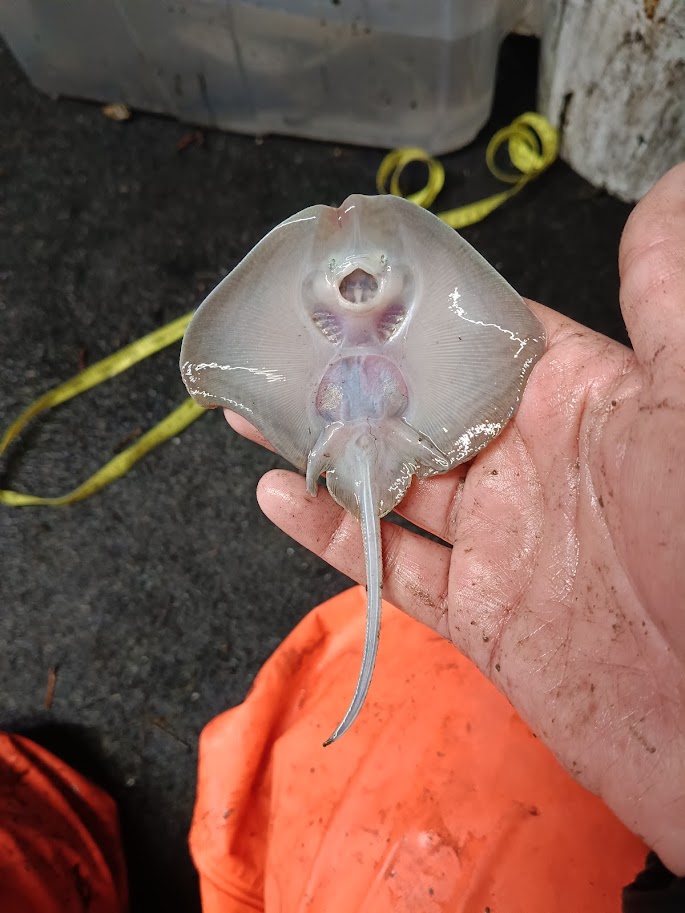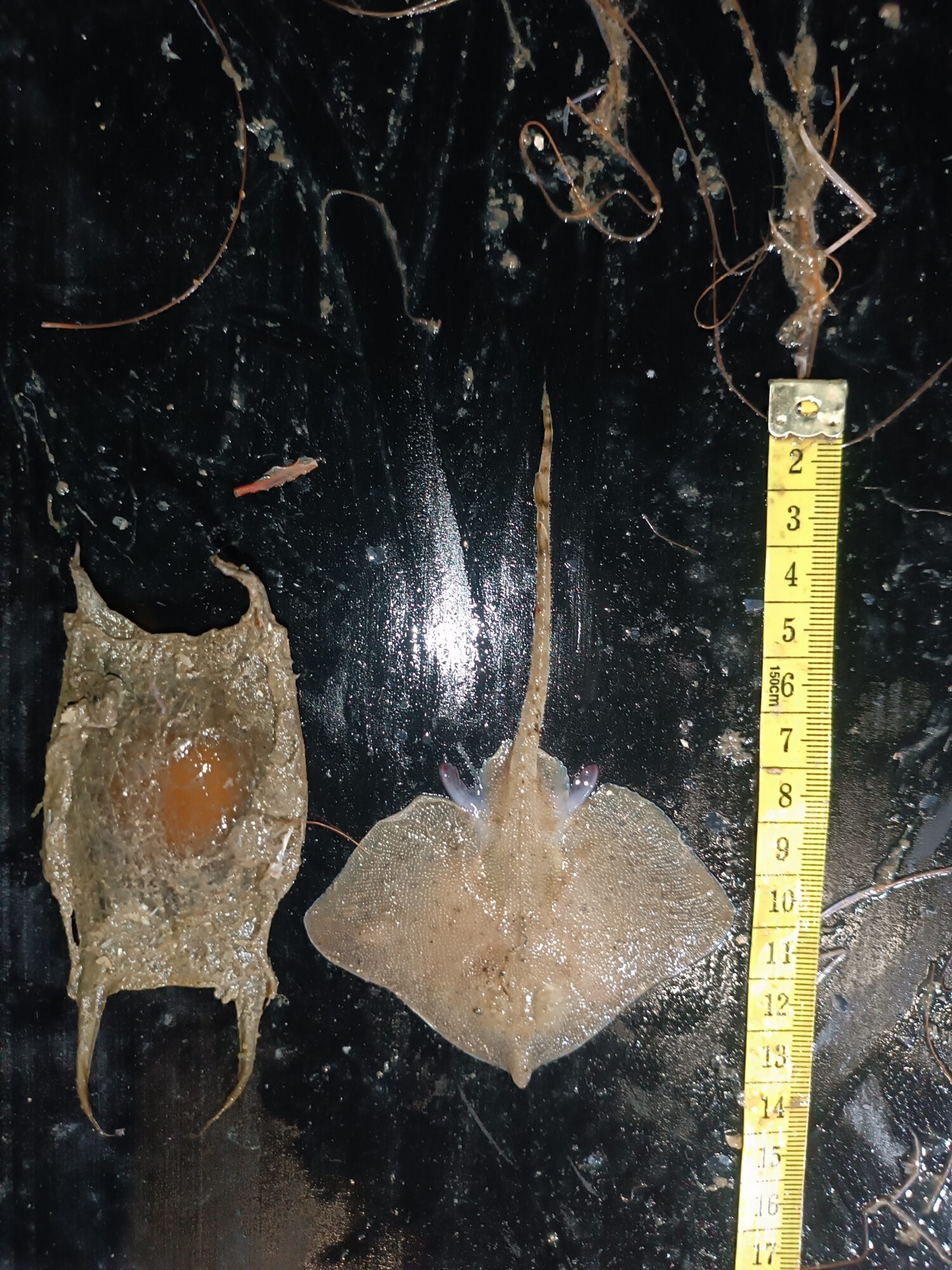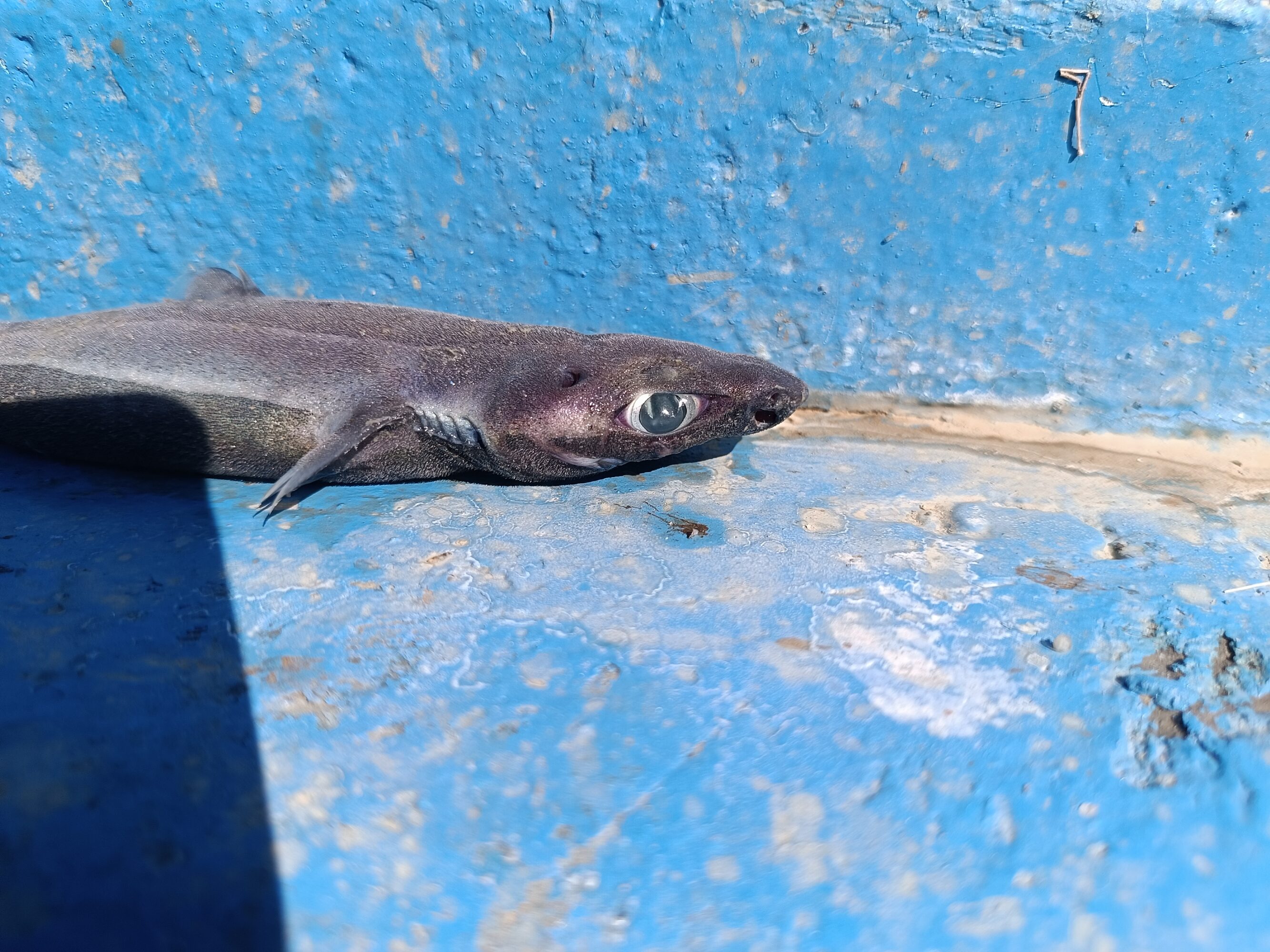Thracean Sea self ISRA: what a place to be born!
Located in the northern-most Aegean Sea, the Thracean Sea is a vibrant and ecologically rich marine region. Its landscape features a mosaic of sandy and muddy seafloors, seagrass meadows, rocky islands, and deep troughs along its margins, supporting diverse ecosystems from shallow coastal waters to deeper pelagic zones. The area is highly productive, driven by nutrient-rich inflows from the Black Sea and seasonal upwelling. Recognised as a biodiversity hotspot, it overlaps with numerous protected and conservation-designated areas, including Natura 2000 sites, Ramsar wetlands, Key Biodiversity Areas (KBAs), Important Bird Areas (IBAs), an Ecologically or Biologically Significant Marine Area (EBSA), and an Important Marine Mammal Area (IMMA).

Raja radula juvenile just disentangled from the net, ready to be released. Photo © iSea
I worked in the area in 2019 and 2020 through the By ElasmoCatch project, gathering data on elasmobranch bycatch, discards, and trade, watching the knowledge gap gradually begin to close. In 2023, the Thracean Sea Shelf was designated as an Important Shark and Ray Area (ISRA) after an intense effort to compile the necessary bibliography and analyse existing data in collaboration with colleagues from the IUCN SSG, Greece, Türkiye, and Italy. The proposal was eventually accepted, and the area was delineated for seven qualifying elasmobranch species and 21 supporting species, including a chimera. Three of the species, the rough skate, the common eagle ray, and small spotted catshark qualified under the reproduction criterion.

One of the few thornback rays, next to his egg case. Photo © iSea
The project results confirm that the area indeed functions as a nursery for the rough skate and the small-spotted catshark. Beyond these, several other juvenile species were also recorded, including the velvet belly lanternshark, the thornback ray, the brown ray, and the marbled electric ray.

A juvenile velvet belly lantern shark. Photo © iSea
Seeing how far we’ve come, from near-total darkness in terms of knowledge about the area’s elasmobranch diversity, I can’t help but wonder: are these records merely chance observations, or could it be that, with more time at sea, we will uncover an even more diverse underwater kindergarten of sharks and rays?
